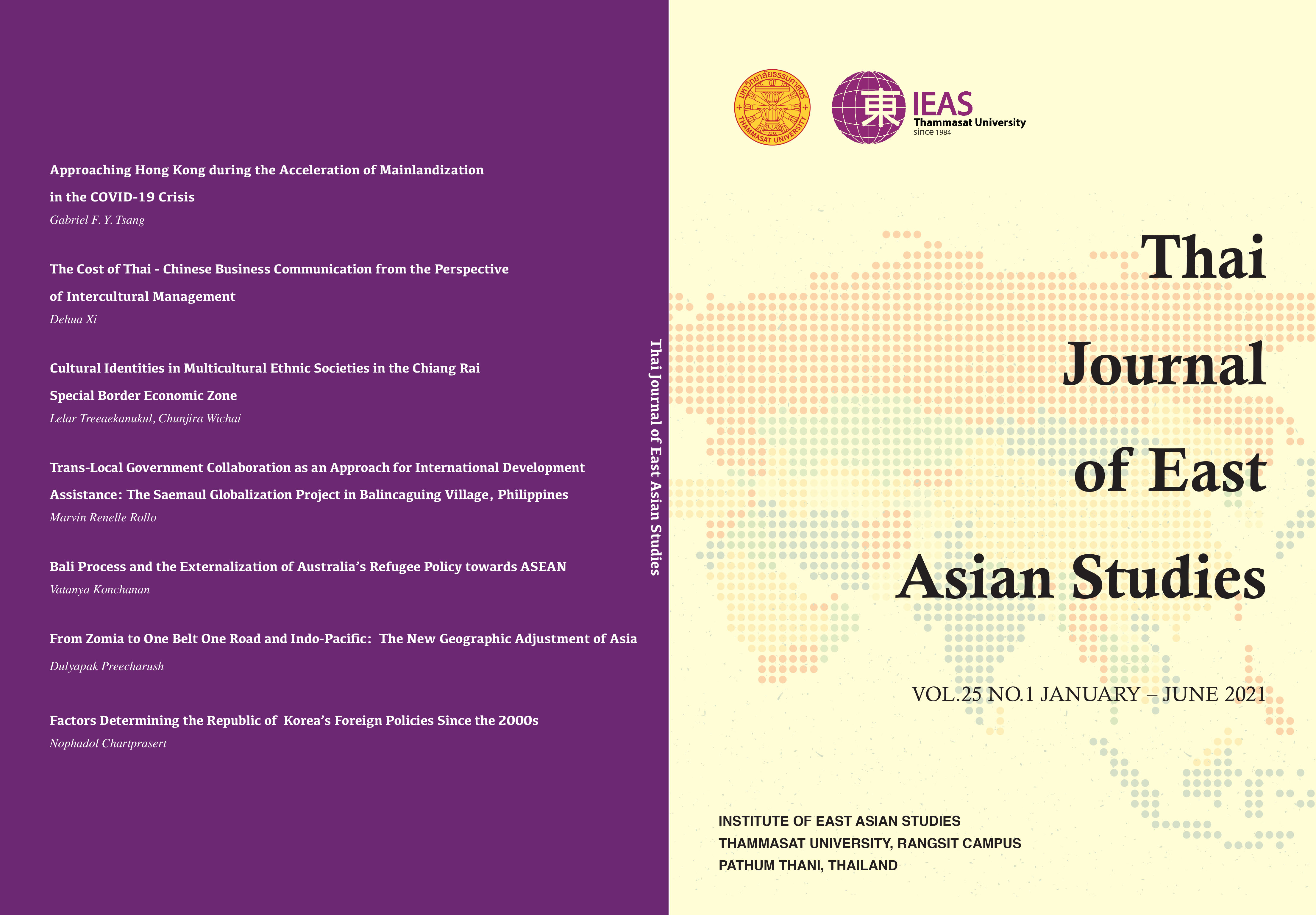The Cost of Thai - Chinese Business Communication from the Perspective of Intercultural Management
Abstract
Throughout the current age of globalization, the cost of business communication between transnational companies and their staff attributable to cultural differences has continued to increase, leading to investment failure; this is an important and serious problem faced by multinational companies. This research is the first to study this using first-hand interview data, and it analyzes the impact of the three dimensions of cognition, attitude and behavior through the application of grounded theory on the cost of business communication from the perspective of cross-cultural management theory in order to understand the effect of interrelationships on business communication costs. The qualitative evidence is analyzed and used to test the four propositions of model. The conclusions are: 1) The intersection area of cognition and attitude has an effect on cost. Further, the sub-dimensions of direction and speed also have an effect on cost. 2) The effect of the three-in-one area of cognition, attitude, and behavior has relevance with respect to Chinese-Thai business communication costs. 3) The three-in-one cross-sectional area of cognition, attitude, and behavior has a degree of impact on the relevance of Chinese-Thai business communication costs. 4) The direction of the three-in-one area comprehensive factor has a strong correlation with the cost of communication or profit. The findings enrich the literature on the subject of cross-cultural management and business communication, and have certain practical and reference value for understanding the situation and operation of Chinese enterprises with respect to business communication with foreign staff. They also contribute to understanding the effect of Chinese business communication on overseas operations.
Keywords: Transnational cultural management, Business communication costs, Cognition, Attitude, Behavior
Downloads
References
Edward T. Hall.1976. How Cultures Collide, Psychology Today, July.
Hofstede, G. 1980. Culture’s consequences. 1st edition. Beverly Hill, CA: Sage.
Hofstede, G. 2001. Culture’s consequences. 2nd edition. Thousand Oaks, CA: Sage.
Murataj M. 2017. American vs. Japanese Management Styles: A cross-cultural influence. State University of New York Empire State College.
Minkov, M. and Hofstede, G. 2011. The evolution of Hofstede’s doctrine, Cross Culture Management: An international Journal, 18(1): 10-20.
Hofstede, G., & Bond, M. 1984. Hofstede’s culture dimensions. Journal of Cross-cultural psybology, 15,417-433.
Hofstede G. and Michael H. Bond, 1988.The Confucius Connection: From Cultural Roods to Economic Growth. Organizational Dynamics, 16, No. 4.
Hofstede, G. 1991.Cultures and Organizations: Software of the mind. London: McGraw -Hill.
Hofstede, G. 1996. Overcoming Obstacles to Cooperation-Multiculturalism and Management (M). Beijing: Science Press.
Lauring, Jakob. 2011. Intercultural Organizational Communication: The Social Organizing of Interaction in International Encounters. Journal of Business Communication. 48 (3): 231–55.
Kluckhohn, F.R. & Strodtbeck, F.L. 1961. Variations in Value Orientations, Evanston, IL: Row.
Trompenaars, F. & Hampden-Turner, C. 1997. Riding the Waves of Culture: Understanding
Cultural Diversity in Business, Second Edition, London & Santa Rosa, Nicholas Brealey
Publishing Limited.
Wang Kefu. 2018. A Brief Analysis of the Impact of Corporate Culture Innovation on Enterprise Management Innovation. Successful Marketi
Xi,D., & Tang, Z.(2016). The Relationship between Trust and Transaction Cost: The Case of Overseas Remittance (Qiaopi). Panyapiwat Journal, 8, 91-104



